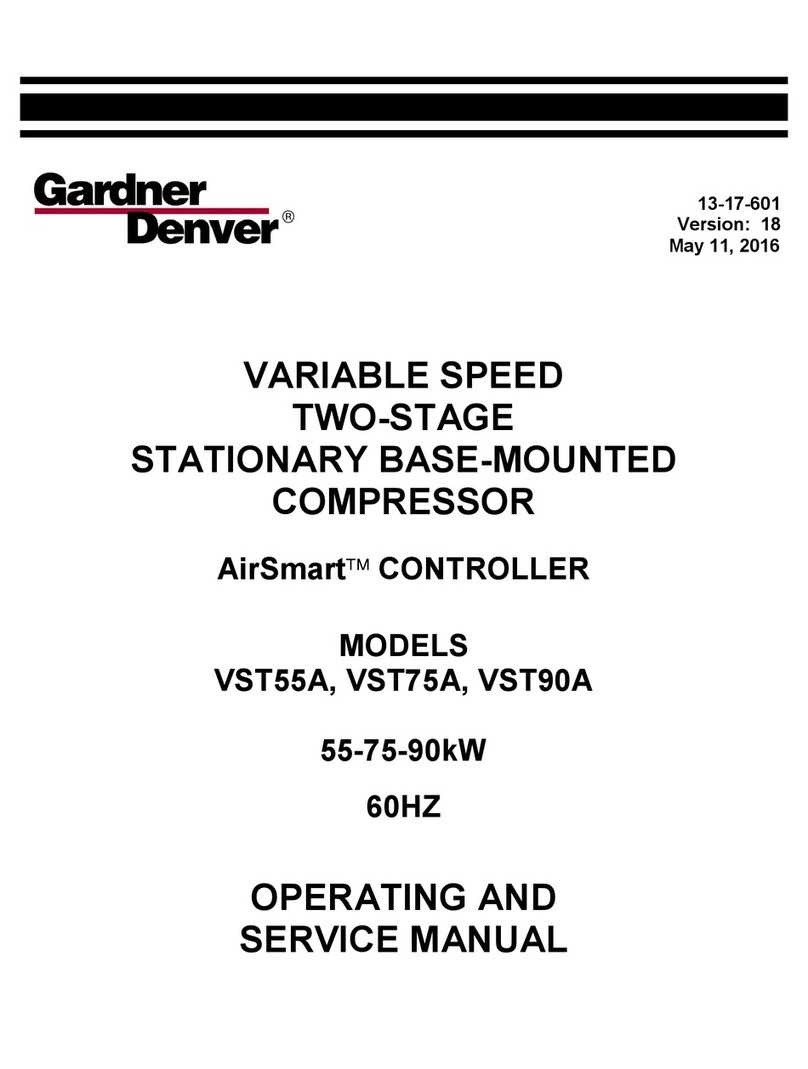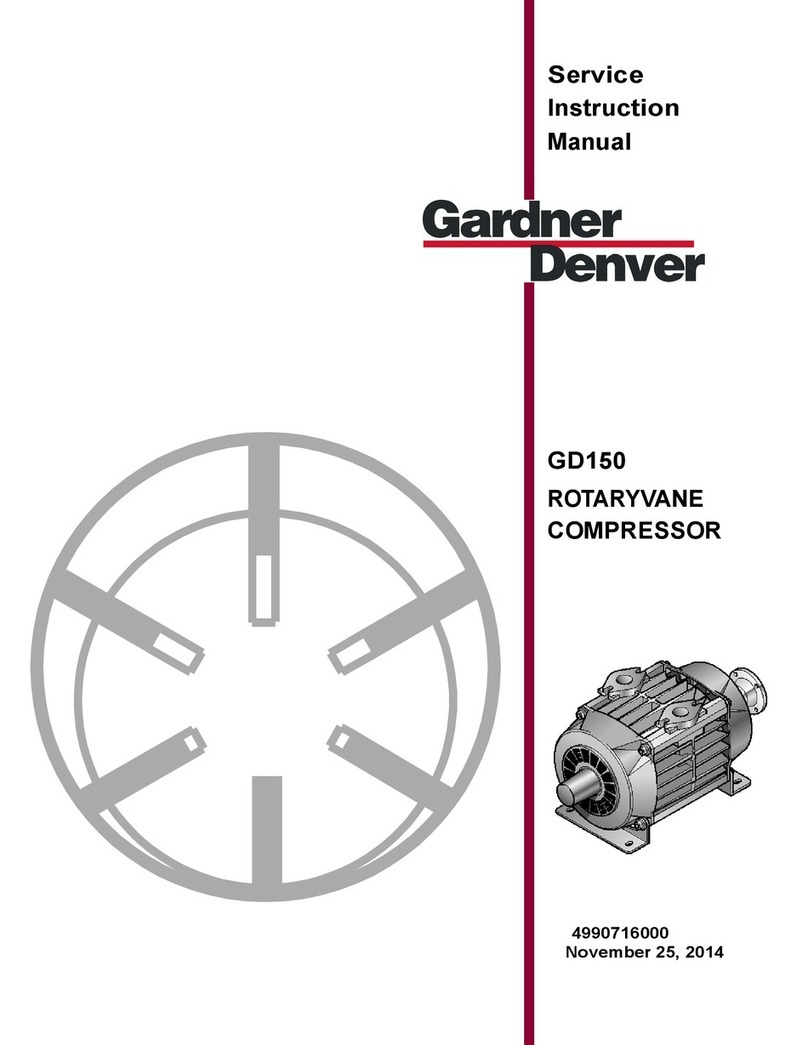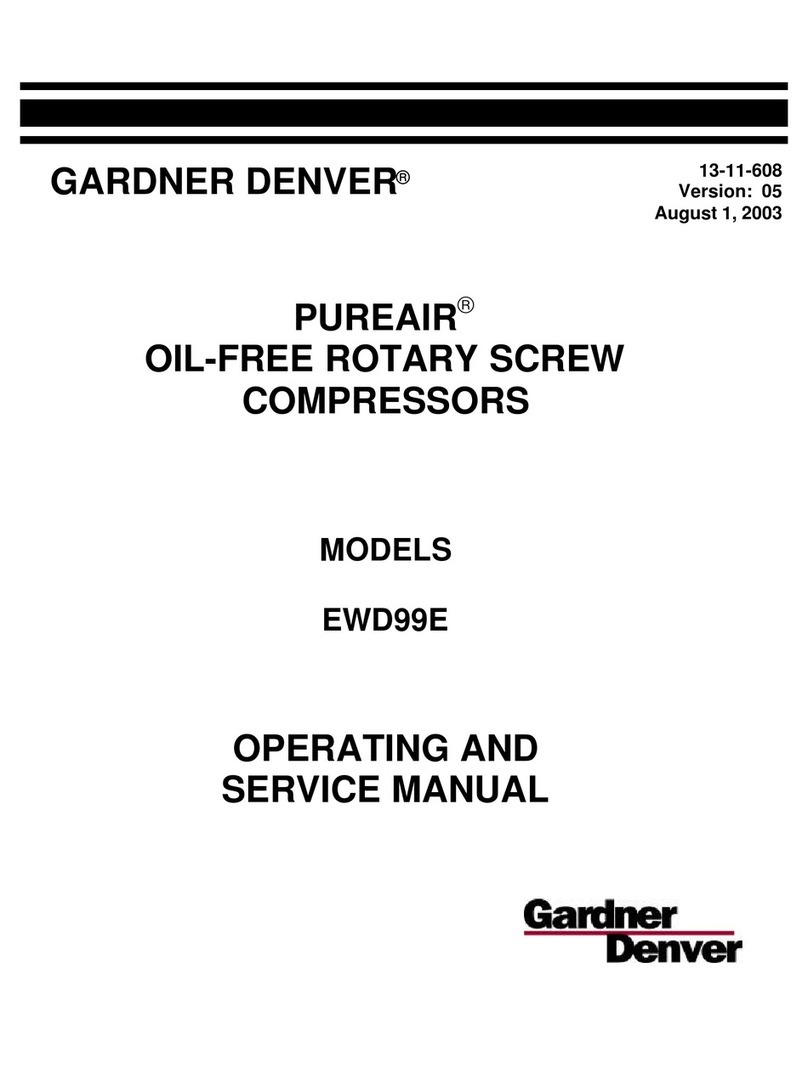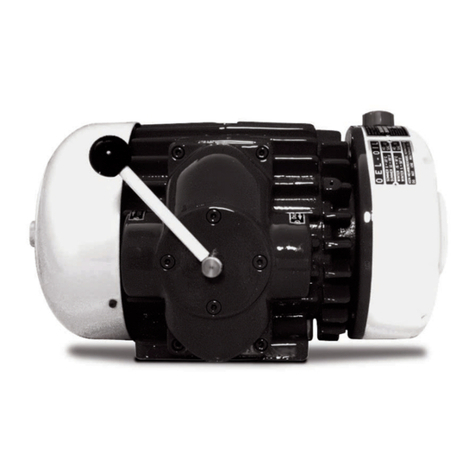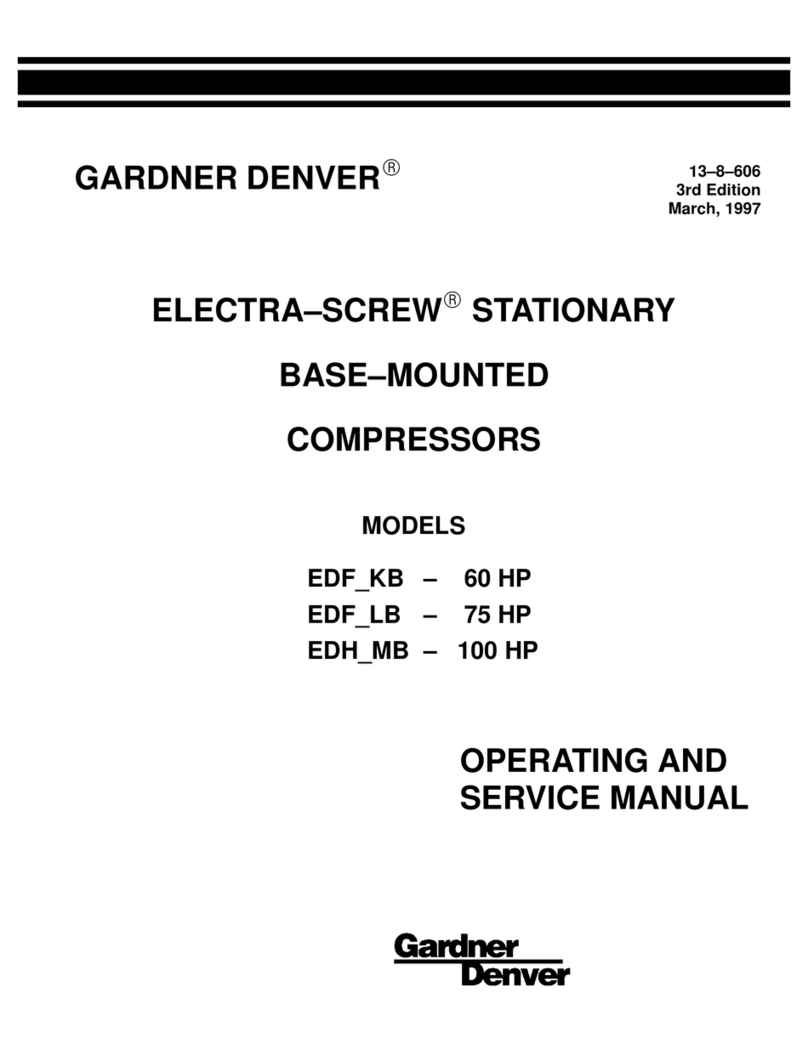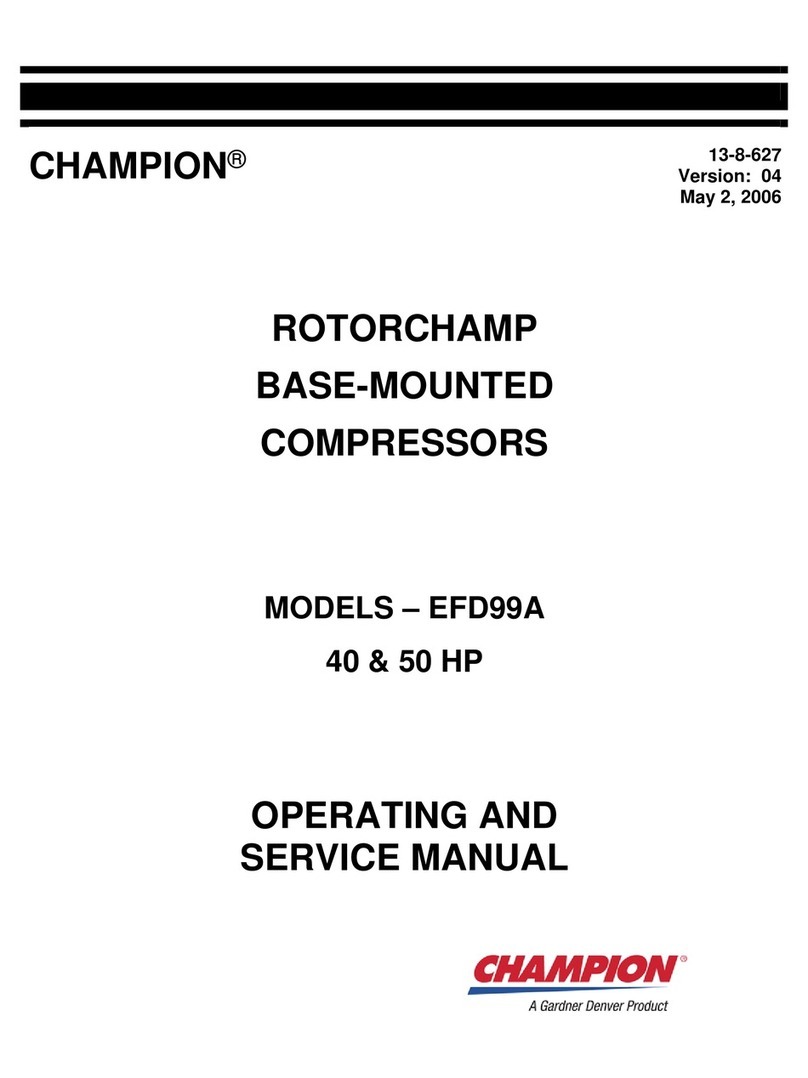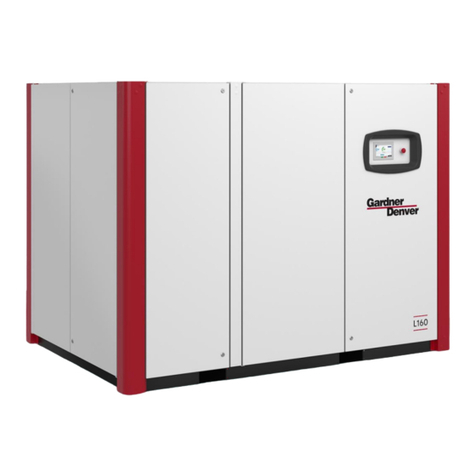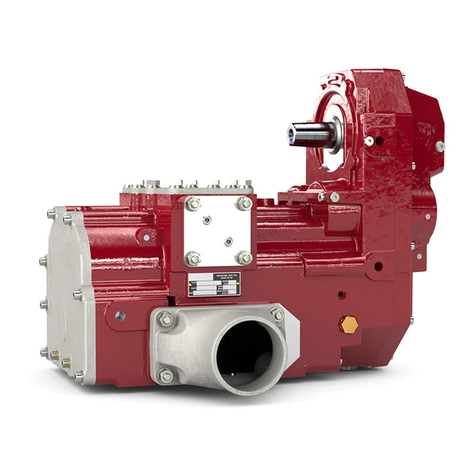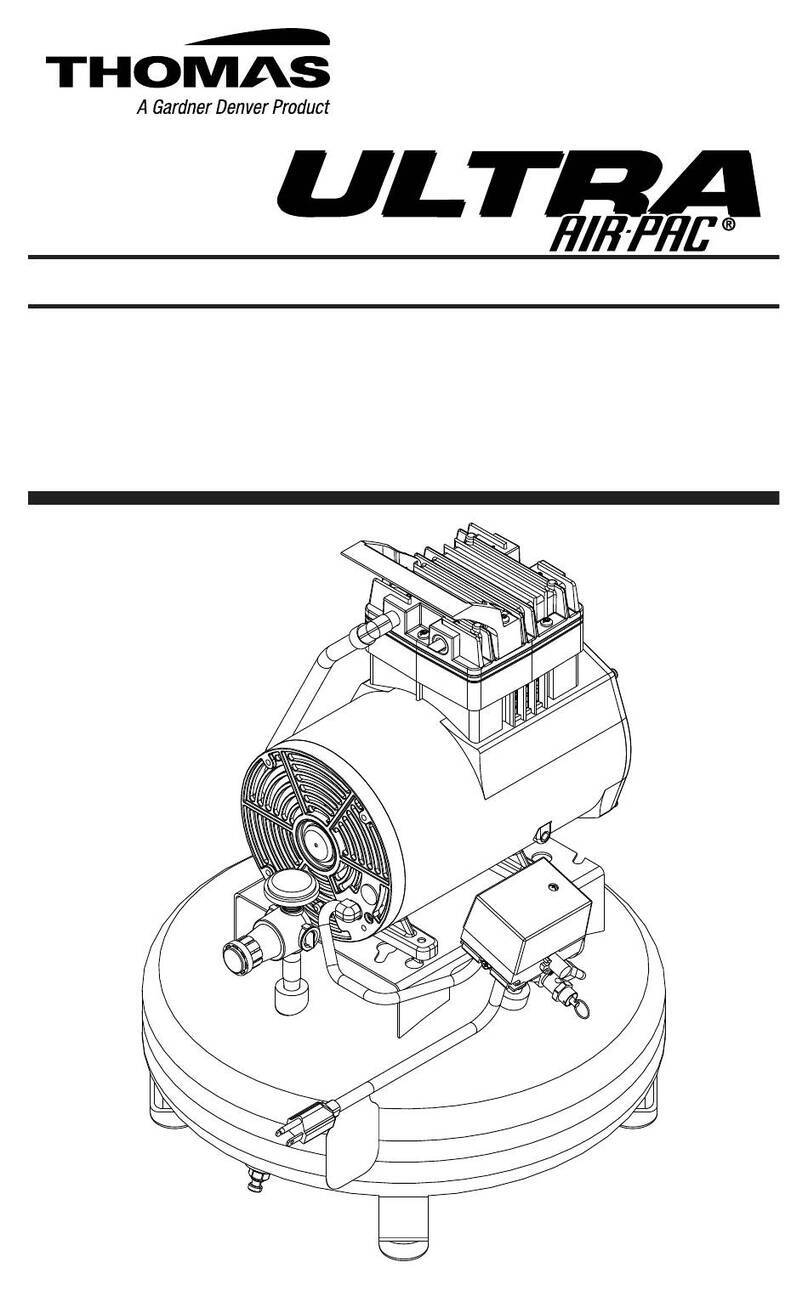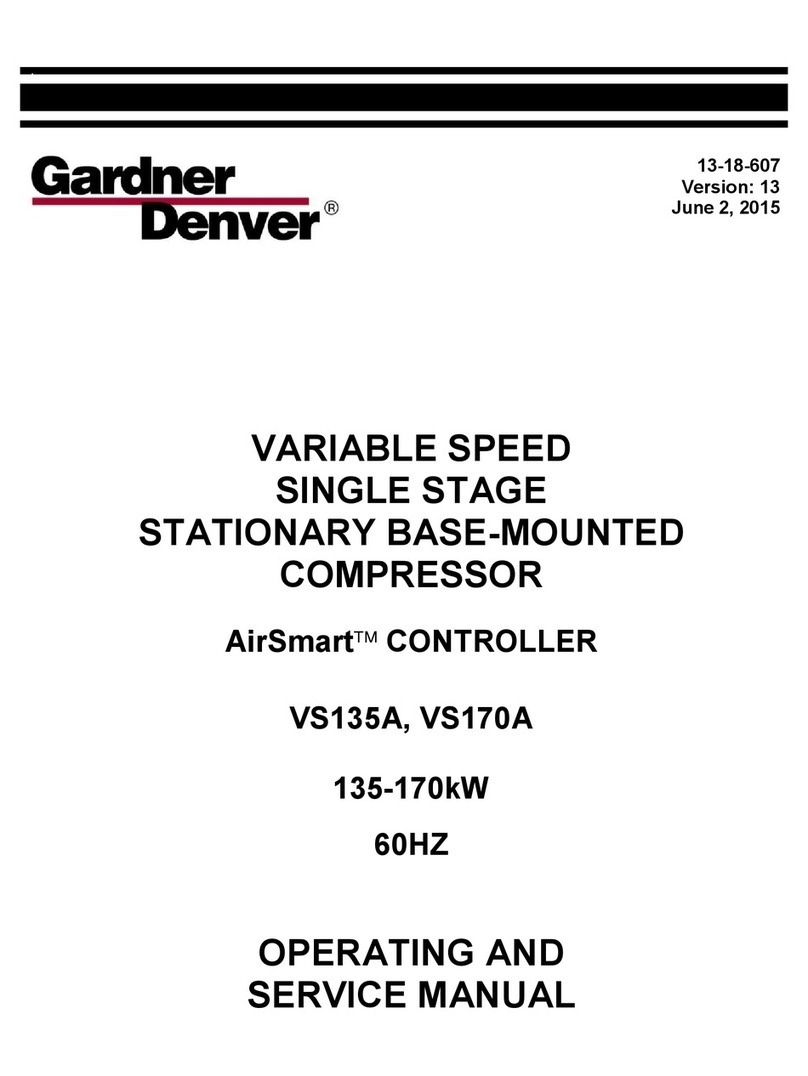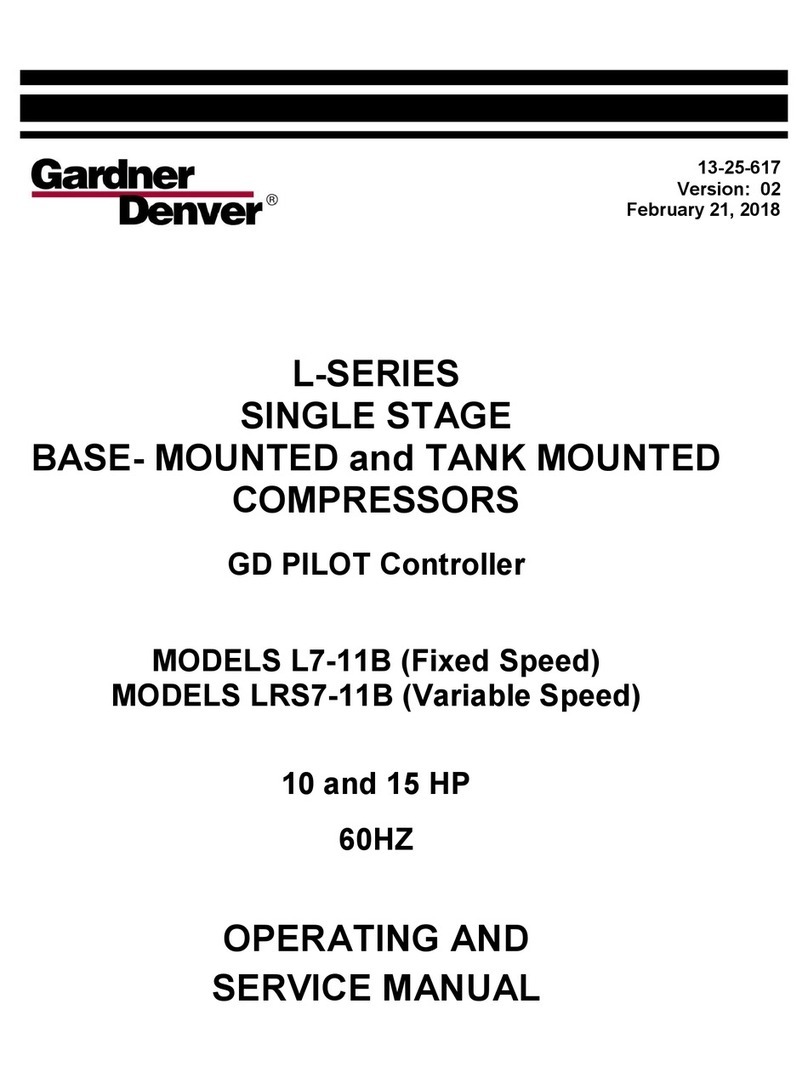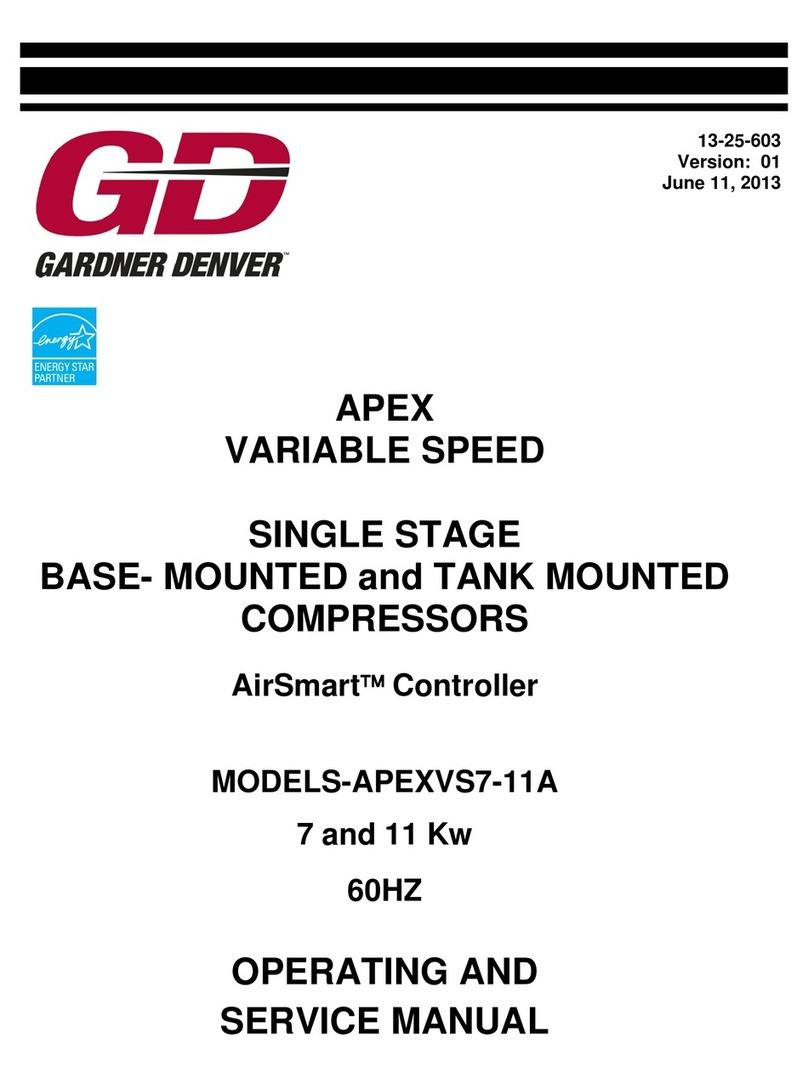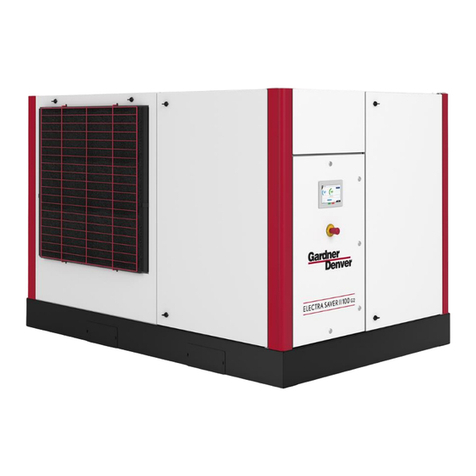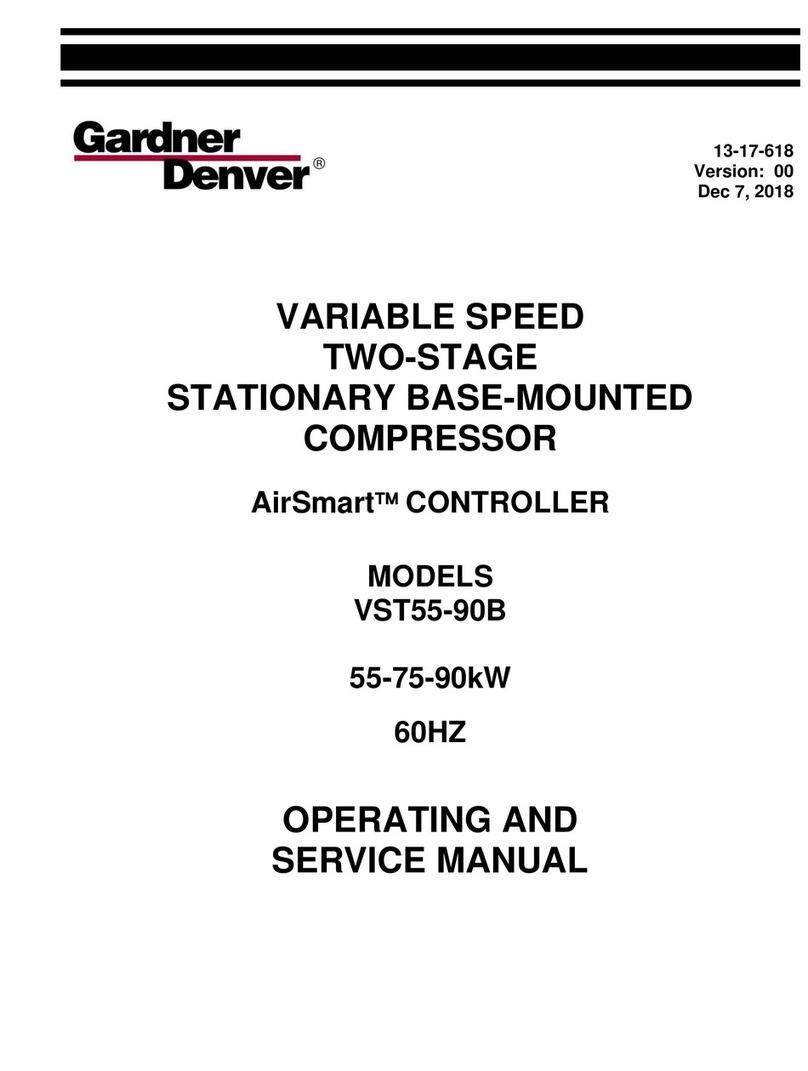
Compressor, Sectional View 10-3
Constant Speed Control System . . . . . . . . . . . . . . . . . . . . 4-8
Constant Speed (Duomatic) . . . . . . . . . . . . . . . . . . . . . . . 4-11
Control Piping ............. .... ................. 2-5
CONTROLS &INSTRUMENTS (SECTION 4) 4-1
Control System Automatic Start-Stop . . . . . . . . . . . . 4-9
Control System, Constant Speed... ............4-8
Control System Dual . . . . . . . . . . . . . . . . . . . . . . . . 4-10
Control System Duomatic . . . . . . . . . . . . . . . . . . 4-11
Control Valve Oil Flow
(Duomatic Control Unit Only) . . . . . . . . . . . . . . . . . . . . . . . . 5-7
Control Valve Thermal (Thermostatic Mixing) 5-3
Control Valve, Water Flow . . . . . . . . 5-5
Control Voltage ................... 4-1
COUPLING (SECTION 7) . . . . . . . . . . . 7-1
Daily Check . . . . . . . . . . . . . . . . . . . . . . . . . . . . 3-1
Diagrams Wiring 4-2 thru 4-7
Differential Group Pressure ........................... 5-8
Differential\ Oil Cooler Oil Pressure
(Air-Cooled Radiatorj 5-8
Differential Oil Cooler Oil Pressure
(Water-Cooled Heat Exchanger 5-8
Differential\ Oil Cooler Temperature
(Air-Cooled Radiator 5-8
Differential!, Oil Cooler Temperature
(Water-Cooled Heat Exchanger 5-8
Differential Oil Cooler Water Pressure
(Water-Cooled Heat Exchanger) 5-8
Dimensions 10-10
Disassembly Instructions, ....... 10-1
Discharge Temperature Air &Oil 5-8
Discharge Pressure Valve Minimum 4-8
Discharge Service Line ................... ...... ..... 2-5
Drain Oil Reservoir ....................... ............ 2-2
Draining and Cleaning Oil System .5-2
Dual Control System .............. 4-10
Du,omatic Control System ..,..... 4-11
Dust Cup(Heavy-Duty Air filter) . . . . . . . . . . . . . . . . . . 6-1
Electrical ........................ 3-1
Electrical Wiring . . 4-9thru 4-12
Electrical Wiring Diagrams .4-2 thru 4-7
Electrical Wiring (Standard Units) 2-5
Element life, Filter (Heavy Duty). ..................... 6-2
Enclosure Acoustic ............................... 2-2, 3-1
Filling Oil Reservoir ... 5-3
Filter, Air ............................ 3-1, 6-1,8-1
Filter, Compressor Oil . . 5-3
Filter Element (Heavy Dutyj ........................... 6-1
Filter Element Life (Heavy Duty) . . . . . . . . . . . . . . . . . . . . . . 6-2
Filter, Heavy Duty Air ................... 6-1
FILTERS, AI R(SECTION6) . . . . . . . . . . . . . . . . . . . . . . . 6-1
Fits . .............. 1o-1o
Flow Control Valve Oil
(Duomatic Control Unit Only) ........................ 5-7
Flow Diagram —Air-Oil Systems. . . . . . . . . . . . . . . . . . . . . 5-1
Foundation . . 2-2
Gauge, Air Pressure .............. 4-8
Gauge, Oil Level ......................... ....... .... 5-2
Gauge, Oil Temperature ........... . . 4-8
Gauges& Instruments ................................. 4-8
General (Controls) .......................... .......... 4-1
GENERAL INFORMATION (SECTION 1) ... 1-1
General installation . . . . . . . . . . . . . . . . . . . 2-1
Grease Recommendations ........ 2-6
Grounding .................................... 2-6
Heat Exchanger, Water-Cooled Compressor
Oil Cooler ........... .. ................... . .. 5-4
Heat Exchanger Water Flow Control Valve 5-5
Heat Exchanger Water Shutoff Valve 5-5
Heavy Duty Air Filter ............. 6-1
High Air Temperature Shutdown 4-1
High Temperature Operation ............. . .......... 5-2
Hourmeter ........,..,.. 4-8
INFORMATION, GENERAL (SECTION 1) 1-1
Inlet Line, ...................... .... ..... ......... . 2-5
inlet Pressure Oil ................ 5-8
Inlet Screen &Tube (Heavy Duty Air Filter) 6-2
Inlet Temperature, Compressor Oil . . . . . . . . . . . . . . . . . . 5-8
Inlet Valve (Constant Speed Control 4-9
inlet Valve (Duomatic Control 4-12
Installation for Cold Weather Operation . . . . . . . . . . . . . 2-2
INSTALLATION (SECTION2) 2-1
INSTRUMENTS &CONTROLS
(sEcTloN 4) ........................................ 4-1
Instruments &Gauges ............ 4-8
Lifting Unit . . . . . . . . . . . . . . . . . . . . . . . . . . 2-1
Light test, Operating ............. 3-1
Location (installation) ............. 2-1
Lubricantq Compressor 5-1
Lubricants, Synthetic ........... .... ..... .... ..... 5-1
Lubrications, Cooling &Sealing 1-1
Lubrication Motor..,.. 2-6, 8-1
LUBRICATION, OIL COOLER, OIL FILTER &
SEPARATOR (SECTION5) .5-1
Maintenance of Air Filters ....... 6-1, 6-2
MAINTENANCE SCHEDULE (SECTION 8) 8-1
Minimum Discharge Pressure Valve 4-8
Mixing Valve, Thermostatic (Thermal Control) 5-3
Mode, Operating ................... ............... ... 3-1
Moisture Separator Trap .. ....................... ... 3-1
Motor &Compressor Alignment . . . 10-9
Motor Lubrication ......................... ....... 2-6, 8-1
Motor Protection Devices 4-1
Oil& Air Discharge Temperature. .5-8
OiF-Air Systems Flow Diagram ......................... 5-1
Oil Capacities .................................... . 5-2
Oil Change Interval .................................... 5-2
oil, Compressor .................................... 3-1
Oil Cooler, Compressor –Radiator Type 5-3
Oil Cooler, Water-Cooled Heat Exchanger 5-4
Oil Cooler Oil Pressure Differential
(Air-Cooled Radiatorj ................................ 5-8
Oil Cooler Oil Pressure Differential
(Water-Cooled Heat Exchanger . . 5-8
Oil Cooler Temperature Differential
(Air-Cooled radiator ................................ 5-8
Oil Cooler Temperature Differential
(Water-Cooled Heat Exchanger) 5-8
Oil Cooler Water Pressure Differential
(Water-Cooled Heat Exchanger) . . 5-8
Oil Filter, Compressor . . . . . 5-3
Oil Flow Control Valve
(Duomatic Control Unit Only) ........................ 5-7
Oil Inlet Pressure ...................................... 5-8
Oil Inlet Temperature Compressor .................... 5-8
13-9-607 Page ii
